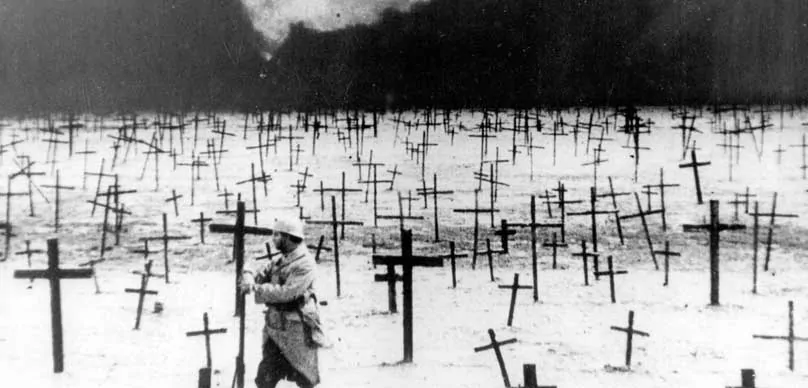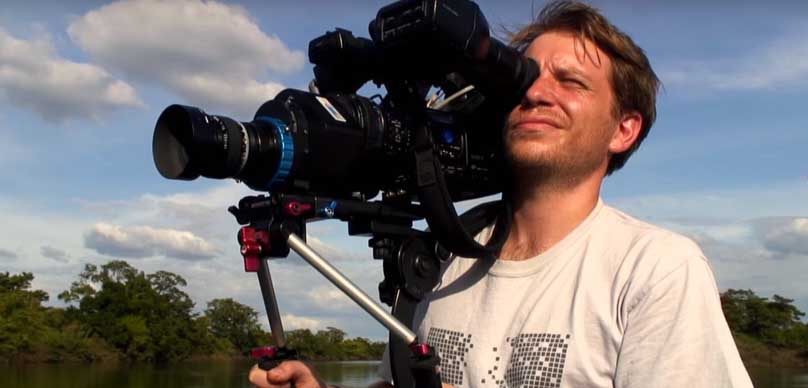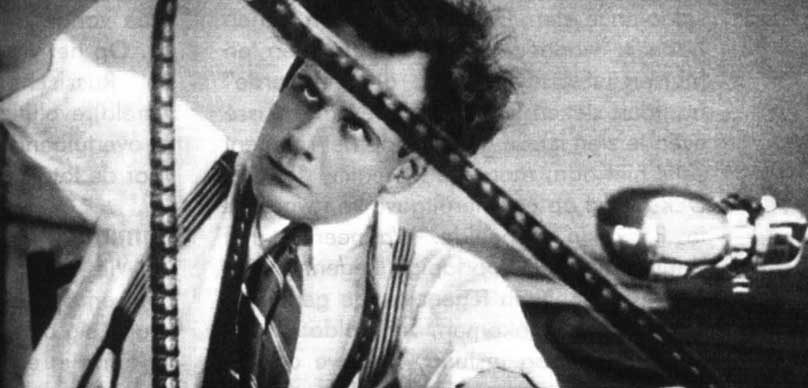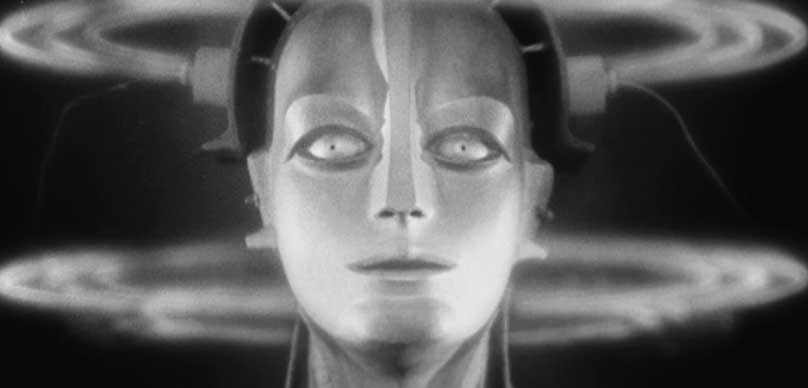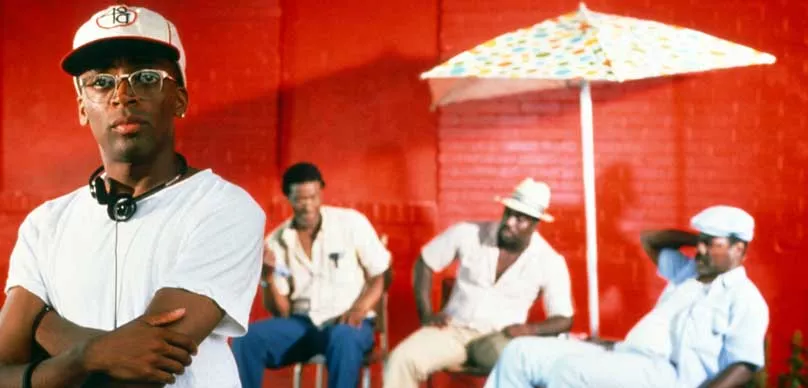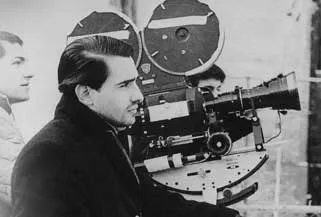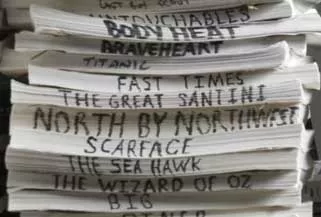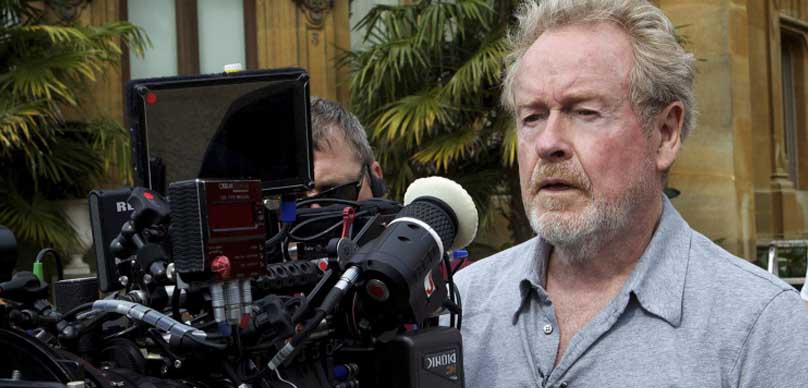Film Movements in Cinema: French Impressionism
The horrors and the atrocities of the First World War provided existential fodder for the rise of the French Impressionist movement, which focused on silent film and spanned a time period of approximately 1918 to 1930.
The movement was unequivocally and unapologetically rooted in French nationalism. The production houses of the time we’re hungry for anything that wasn’t American and as a result, we’re extremely supportive of its native filmmakers, who were committed to delving into the deepest, darkest reaches and recesses of the human psyche in terms of their storytelling and how it was captured on film.
Innovation in French Impressionistic Filmmaking
Keep in mind that this was during the silent film era, so there was much more of an emphasis on the visuals to convey the story, and as a result, filmmakers pushed the envelope in terms of developing a non-linear editing style as well as employing new camera styles, which included POV and widescreen angles. Not like the French New Wave.
They loved to experiment with new lighting styles, and the directors weren’t afraid to employ extreme measures in order to achieve the desired effect, such as putting a cameraman on a pair of roller skates.
French Impressionistic Filmmaking Subject Matter
As stated before, the storytelling tended to be dark in nature and didn’t shy away from taboo subjects; one such film entitled The Seashell and the Clergyman, directed by Germaine Dulac, did a deep, disturbing, albeit surreal dive into the psyche of a priest who had designs on a general’s wife. One writer humorously stated the title’s seashell was something “you definitely wouldn’t put anywhere near your ear.”
Filmmakers went from the initiate and at times, disturbing, to sweeping epics such as Napolèon.
Notable French Impressionism Filmmakers
Notable filmmakers of the time included Jean Epstein, Abel Gance, Marcel L’Herbier, and the aforementioned Germaine Dulac.
Notable French Impressionism Films
Notable films of the French Impressionist movement included The Seashell and the Clergyman (1928), Napolèon (1927) Fievre (1921), The Smiling Madame Beudet (1923) and The Faithful Heart (1923).
French Impressionism’s profound impact on French Cinema was far-reaching and is reflected in the later films of Alain Resnais, Jean Cocteau, and Marcel Carné to mention a few.
https://youtu.be/cRrjE2O2aas
French Impressionism Fun Facts
- If you thought James Cameron’s Titanic was long, try sitting through Abel Gance’s The Wheel which was a three-evening event.
- If you thought to switch out Titanic’s two VHS tapes was too much to ask, imagine the projectionist who had to maintain and switch out The Wheel’s 32 reels! Talk about a workout!
- Marcel L’Herbier’s El Dorado (1921) was one of the first recorded cases of production going over budget. (Take that, Heaven’s Gate and John Carter of Mars!)
- Visionary director Stanley Kubrick called Napoléon “really terrible. Technically (the director) was ahead of his time and he introduced new film techniques… but as far as story and performance go, it’s a very crude picture.”
- The British Board of Film Censors summarily dismissed The Seashell and the Clergyman as “so cryptic as to be almost meaningless. If there is a meaning, it is doubtless objectionable”.
If you liked The Film Movement in Cinema Series, then you’ll love:
[adsanity_group align=’alignnone’ num_ads=1 num_columns=1 group_ids=’13487′]
[adsanity_group align=’alignnone’ num_ads=1 num_columns=1 group_ids=’13488′]
[adsanity_group align=’alignnone’ num_ads=1 num_columns=1 group_ids=’13489′]
Enjoyed The Film Movement in Cinema Series? Please share it in your social networks (Facebook, Twitter, email, etc) by using social media buttons at the side or bottom of the blog. Or post to your blog and anywhere else you feel it would be a good fit. Thanks.
I welcome thoughts and remarks on ANY of the content above in the comments section below…
Get Social with Indie Film Hustle:
Facebook: Indie Film Hustle
Twitter: @indiefilmhustle
Instagram: @ifilmhustle
YouTube: Indie Film Hustle
Podcasts You Should Be Listening To:
Podcast: Indie Film Hustle® Podcast
Podcast: Bulletproof Screenwriting® Podcast
Podcast: The Filmtrepreneur® Podcast
Stuff You Need in Your Life:
IFH Academy: Exclusive Filmmaking & Screenwriting Training
IFHTV: Indie Film Hustle TV
Book: Rise of the Filmtrepreneur®: How to Turn Your Indie Film into a Moneymaking Business
Book: Shooting for the Mob (Based on the Incredible True Filmmaking Story)
FREE 3-Part Indie Film Producing Video Series
Please note some of the links on this page are affiliate links, and at no additional cost to you, I will earn a commission if you decide to make a purchase or use a service. Understand that I have experience with all of these services, products, and companies, and I recommend them because they’re extremely helpful and useful, not because of the small commissions I earn if you decide to buy something.
Spoiler
So in this video we’re talking about able dances. Napoleon a movie from the distant future of 1927. We still don’t see camera movement quite this crazy. Here the camera was placed on a swinging pendulum. To give it the feeling of a wave and to compare the reign of terror to attempt is that See? Oh, we’re gonna have a horse Chase.
Well, where do we put the camera this time? Yep. Sadly, Abel Johnson’s other plans to put the camera in a soccer ball and throw it at a kid’s face to give the audience the perspective of a flying snowball turned out to be impossible due to the technical constraints of the time. Here are the shots he had to settle for. Not that cool.
But fortunately, in just the last decade, the world has caught up on at least this one idea so we can still kind of get to see what God’s had in mind. Oh, I heard the Bourne Ultimatum has a lot of handheld camera and fast evidence.
Babies stuff. There’s something important that I’m forgetting. Oh, yeah. The three screen finale. But that’s not that cool. Now we’ve got widescreen Cinerama IMAX, look how awkward that is. But what if Abel gaunce was not only the first person to experiment with larger formats? What if he took that experimentation farther than anybody has since
tried to imagine this experience in the theater, live orchestra and all. But everything you’ve seen is barely the start of what makes this movie special. It’s not like anything made before since. And we can go a lot deeper into what makes it that way. But to be able to do that, first, we’ll have to deal with a few things begging to be addressed.
Like first, why is someone making this weird movie who was this guns guy and what does he want? While sometimes big artistic innovation happens because one guy feels like messing around and adding to and breaking the existing rules. But more often, when somebody is doing 100 new things, it’s because they want the art form to serve an entirely different purpose than the one everyone else was working toward. And to make it do that they need a whole new set of rules.
God saw Napoleon as the first step to a new kind of movie that he believed would change the world. And we’re not going to understand Napoleon if we don’t also talk about God’s his vision for the future of cinema. But now that’s something else we need to address. God’s definitely didn’t change the world.
Really, it’s more like this movie never even happened. its impact on film history is almost none like it exists outside of time and some alternate dimension where movies turned out differently. But this movie is five and a half hours long. So it does exist in time, a whole lot of it. How do you ignore all that movie? The length is certainly one reason distributors at the time didn’t give it a proper release. three screens didn’t help either. Critics at the time just weren’t given a chance to react.
Even if they were there would still be yet another greater force acting against the movie 1927 The last thing left to address the height of silent cinema. One of the best and worst years for movies. A lot of good stuff came out that year. But all that ambition and creativity was no match for one cheap, unimaginative and really just awful movie.
Why? Sound didn’t ruin movies, but you can’t really call it progress either. One art form died and another took its place. silent movies were a totally different medium. They had similarities to sound films which adopted some of silent films basic techniques, like dramatic camera angles, extreme wide and close shots, the free moving camera these basics survived but many of silent films most interesting innovations did not the Russians particularly Eisenstein wanted to create a new kind of propaganda that could communicate Marxist ideas to a literary peasants.
This meant inventing ways of communicating abstract and philosophical ideas through editing and imagery. here without any words, Eisenstein accuses the church of attempting to use its influence to create a new czarist like regime. Meanwhile, the Germans and the French were developing ways of visually communicating emotions, thoughts and states of mind.
The Germans were trying to make their internationally popular melodramas more emotionally potent, and the French were messing around because nobody was watching their weird movies anyway, which were usually like the standard narrative films of other countries, except that they would burst into random moments of visual poetry, which sometimes depicted the thoughts and dreams of the characters, but other times were just cool looking stuff.
The way things were headed many people believed that film was on its way to developing a new completely visual language. And what about gaunce he had actually influenced all these countries with his earlier film LaRue and now with Napoleon, he would absorb all their different reactions and combine them towards his own idiosyncratic goal. Gods didn’t just want to speak cinema, he wanted to sing it. He wanted movies to become what he called the music of light.
He wanted his movie to communicate ideas, but he wasn’t trying to make propaganda or a philosophical essay like the Russians. Like the Germans, Khan’s visually communicates emotions, but he isn’t trying to make a movie about empathizing with or being emotionally invested in the characters. The emotions gaunce is really after are of a different kind. And like other French movies, Napoleon has long poetic visual sequences, but they aren’t tangential are random, they’re essential to the kind of movie Gods is trying to make. Let’s start with that
distinction. Why aren’t these sequences random? Because in napolean, these sequences aren’t a distraction from the drama they’re its replacement. Ultimately, Napoleon isn’t a dramatic film. It’s an experiential one. What does that mean? Well think of other experiential epics like 2001, or Apocalypse Now, which I’m about to spoil the ending to to help explain our distinction, though, it’s not really a movie where story spoilers matter much because in the end, when Willard kills Kurtz dramatically, it’s not much of a payoff. We still don’t really know anything about willards motivations or feelings.
Pat Brando doesn’t even put up a fight. But the scene still pays off audio visually, we get the madness, the horror, the visual metaphor of the ritually slaughtered bowl and we’re not left disappointed. we’re satisfied by the experience not store your character drama because the rest of the film The gradually crazier and crazier experiences on the boat we’re building to this experiential climax, not the dramatic climax between Willard and currents. There’s our distinction.
Many movies offer some drama and some experience but what’s supposed to be the big payoff? What’s the audience staying in their seats for? What is the movie taking its time to set up? That’s what makes it a dramatic or experiential film. Bullying is broken up into a series of historical episodes, which usually build up to some grand visual spectacle.
The end of the whole five and a half hour movie is a bunch of guys walking, but it’s on three screens. Which brings us back to that second distinction. If Napoleon isn’t a dramatic film, what kind of emotion could it offer? Right, not the intellectual empathetic kind where we come to understand a character’s motivations and inner struggles, but something more immediate and primal, participative emotion like we get with music or from being a part of a crowd.
These feelings aren’t vicarious, they’re visceral, and we share them directly with one another, like this. Are you breathing a little faster? Before drama existed? theater was about this kind of emotion. In Greek tragedy, there was something called the chorus. It was a kind of sub audience, a group of actors just there to react to the events in the story, kind of like a laugh track, except instead of laughing they were creepy masks and cathartically screamed and cried when the hero was killed.
The hero didn’t need any motivation or inner struggle because he was just a sacrificial lamb, a great man cruelly murdered by fate. So the audience has an excuse to join the chorus and ritual screaming, the chorus and audience fed off of each other and the effect was huge.
The audience was part of the play because without them the whole thing wouldn’t work or make any sense. gaunce was heavily inspired by this idea. He said he wanted his audience to become actors in the film. That’s why he flailed around like a crazy person and participated in every scene. Why throws us into so many weird perspectives and why he said the most important actors actually in the Polian were the extras, which is kind of an oxymoron.
They’re literally called extras, but for God’s they were the emotional core of his movie, his version of the Greek chorus. So much of the movie is shots of big crowds, which Gods wants us to become a part of, so that we can enter the film and feel alongside the characters, not for them. Most of our connection to the main character comes from the effect he has on these crowds and his ability to inspire them to great things.
God’s himself sort of had those powers famously he can inspire Extra is to cry actual tears and throw actual punches, Danish director Carl Dreier was horrified by the amount of injuries he saw in concert set. But God says extras often talked about feeling as though they were part of something bigger than themselves.
I sort of felt that way watching this movie in the theater with an audience and I’m a person usually so uncomfortable with group emotion that I physically can’t make myself do the wave at a sports game. Take away the audience, big screen and my orchestra and this movie makes a whole lot less sense. It’s a such a sadness, that you think you’ve seen a film on your fucking telephone.
Get real. Guns would take an even harder stance. For him movies shouldn’t just be seen in the theater they should be playing in stadiums for 20,000 people. At Napoleon’s premiere during the scene where the French for sing the Marseillaise guns recreated the scene in the theater by having lyrics passed out to the audience, then having the actor lipsync his performance while the audience son alone, that’s the kind of participate of group emotion dance was going for.
Now, finally, to our last distinction, ideas, as opposed to the smart intellectual visual ideas of other films, Napoleon has what many critics have called a stupid ideas. And in part, that’s because the movie really does have some of the most obvious on the nose symbolism of any movie ever.
Literally, this is on the nose. But Gods wants to speak cinema and he wants to speak it to normal people not leave a secret code for the nerds. The few visual metaphors that exist in modern movies are generally set up. So if the audience misses them completely, it doesn’t hurt the rest of the movie, they’re tangential easter eggs.
In napolean. metaphors are referenced multiple times and play off of each other. They’re intertwined and essential to the film, if the audience isn’t getting them the movie just dies. So Gods has to keep it kind of simple. But remember, Napoleon is supposed to be just the start, the movie makes an active effort to teach the audience the basics of speaking cinema, and the visual language is able to become more complicated as the movie goes on. But let’s not start calling the Polina educational film because it’s important to Gods that his audience isn’t thinking about stuff. Remember, he wants us to become actors and be absorbed into the movie.
Like his emotions, he needs his ideas to function on an immediate musical level. So the audience doesn’t enter a detached intellectual state. He layers dozens of images and puts them on three separate screens to make it impossible to analyze exactly what you’re seeing, though, you still get the overall idea, guns, when you listen to the orchestra, you don’t hear whether it’s the bassoon or the flute or the oboe that’s playing, but you hear the ensemble.
Likewise, with Napoleon, you have a visual ensemble. And when you present that on three screens, the audience is overwhelmed. For me, a spectator that maintains his critical sense is not a spectator. I want the audience to come out of the theater amazed victims emerging from Paradise to find a last the hell of the street.
That is cinema. However, God’s not wanting us to think doesn’t mean he can’t communicate anything interesting, because he does. He’s not communicating deep philosophical ideas, but he communicates something better. Here are some of God’s his notes on this seed. Tight correlation between the two storms.
Word words can no longer describe the parallels. Who can explain music in words? indescribable double storm suggestion rather than avocation? All right. He’s trying to suggest something that can’t be put into words, he’s not comparing the reign of terror to a storm to evoke a particular idea or make a point. He’s giving us a new way of seeing events.
We’re seeing the world here through the lens of a poetic metaphor. Right poetry can allow us to try on 1000 different eyes and enriches our experience of everything for God’s film could be a way to mainline poetry and actually try on different pairs of eyes, not only because it can directly show us a different perspective, but also because it can have us live it. That’s why we’re becoming actors and feeling and living alongside the characters Gods believe film could even take us a step further than poetry.
If we could feel act in see as other people, perhaps we could experience life as other people. This is where for God’s film becomes a religion. He wanted theaters to be cathedrals of light, where people would come together and partake in the ritual of transforming themselves. And by becoming the many great and small people have history.
They might as Gods believed begin to experience life as a waking dream, a reality the square of what it now is because our perspective, our world would be something completely at our control. And we could experience every moment not only as ourselves, but as the Buddha as Jesus as Socrates. And of course, Napoleon, that’s what this movie is all about.
The audience becoming Napoleon, throughout the movie Gods isn’t just instructing us on the language of cinema. He’s instructing On the language of Napoleon, how he sees and processes the world. It gives us a number of repeated visual themes all related to his perspective. There’s his abstract military super brain,
the light or fire burning in his soul, liberty, the revolution in the rights of man. His romantic solitude, his total desire for josefin, which is connected to his total desire for the world.
And the ego, which is an extension of himself, and also like a real Eagle that stalks him throughout history. And like music, all the themes coming together at the end. In our second last sequence, Napoleon describes his dreams and desires into the sky. And not only can we understand them, but on some level, they’ve become our dreams, too.
Then the last sequence, the pullian soul, soaring on a fantastic dream, plays with the clouds that destroying and building worlds. And that’s what God’s wants us to do after the movie, to go outside, look around and with our eyes, destroy and create worlds.
That’s it. Music of light. Well, as far as gone Scott with it, he said, towards the end of his life, he hadn’t achieved 5% of what he was capable of. He wanted his visual symphonies to eventually become free from the screen to appear around his audience to surround, absorb and transform them, and of course, all in stadiums of 50,000 people. But after Napoleon, he wasn’t allowed to make a film like it ever again. He said in 1972, cinema is still in its embryonic stage, and it’s safe to assume he would still say so.
And he’d probably be right. Although it’s pretty clear, the future of film doesn’t have much to do with stadiums. Probably more to do with the little screen. You’re watching this on right now.
Does that mean there’s no hope for the music of light? Not necessarily. I think something like that might still have a chance. Maybe not in film, but we still have to do something with VR, which might be pretty good at communicating perspective and involving people. Maybe God says future is actually pretty close. Transcript of Abel Gance’s Napoleon – A Film From The Future.

